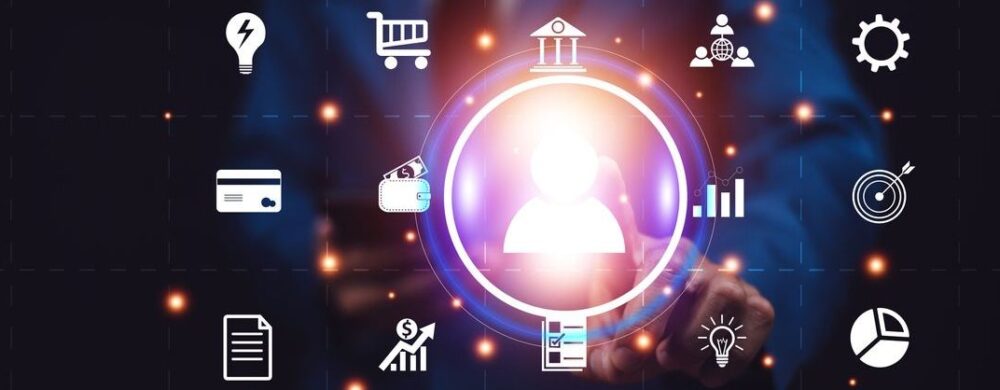Contact us and see what NetOwl can do for you!
How Identity Resolution Supports a Single View of the Customer
Identity Resolution, Name Matching, Record Management, Risk Management

A Single View of the Customer Is Critical to All Types of Companies
Nowadays how well a company manages its customer data is critical to its success. One key goal is to gain as complete and unified picture of a customer as possible (commonly known as the Single View of the Customer).
The mass adoption of technologies such as mobile devices, on-line customer support, social media platforms, etc. has given customers a myriad of ways in which to communicate with a company, making the job of unifying customer data that much harder.
Developing a complete, holistic view of a customer offers several advantages to a company:
-
- It allows a company to make the most appropriate product offers to a customer based upon a complete purchase history.
- It removes errors in risk assessment.
- It helps to catch fraudulent claims.
- It improves customer support.
- It prevents duplicate marketing costs.
Right Now There Are Several Organizational Barriers to Achieving a Single Customer View
There are many barriers in a company that hinder a single customer view.
Many companies maintain multiple databases with the same or different data fields for customers.
They conduct business through multiple channels:
-
- Different independent agents
- Different third-party vendors
- Web sites
- Call centers
- Different product lines that frequently do not communicate with each other.
All this leads to inconsistent and incomplete data about a single customer spread across an organization in different departments and different databases. This data needs to be aggregated, merged, and deconflicted, including the customer profile (name, address, phone number, email, etc.), but also specifics about the nature of a customer’s interaction with the company (e.g., purchase, support request).
Matching Data Records Is Hard
A key challenge to a Single View of the Customer is that data is entered very inconsistently. Here is an example of two data records:
DATA RECORD #1 DATA RECORD #2
NAME: Mr. Sean Bordon FIRST NAME: Shawn
COMPANY: Titan Energy Partners LAST NAME: Barden
ADDRESS 1: 324 Crestwood Drive COMPANY: TEP
ADDRESS 2: Suite 10 ADDRESS: 324 Crestwood Dr., #10
CITY: Albuquerque CITY: Albuquerque
STATE: New Mexico STATE: NM
ZIP: 87101-2567 ZIP: 87101
PHONE: 505 632 1005 PHONE: 505 632 1000 Ext. 5
Here we see many of the typical obstacles to accurate name matching:
-
- Names that sound the same or similar but with different spellings:
- Sean vs. Shawn
- Bordon vs. Barden
- Presence of titles in some fields where the other record doesn’t have them:
- Sean Bordon vs. just Shawn and Barden
- Full form of an organization or place names vs. an acronym:
- Titan Energy Partners vs. TEP
- New Mexico vs. NM
- A data element represented in two fields vs. one field:
- ADDRESS 1: 324 Crestwood Drive and ADDRESS 2: Suite 10
- ADDRESS: 324 Crestwood Dr., #10
- Different representations of the same data element:
- Suite 10 vs #10
- Drive vs. Dr.
- Data fields that resemble each other with a difference:
- 505 632 1005 vs, 505 632 1000 Ext. 5
- Names that sound the same or similar but with different spellings:
In addition to the phenomena in the data above, simple misspellings frequently occur.
Obviously, matching only on a personal name will not ensure certainty that two instances of the same name refer to the same individual. There are lots of Jim Smiths in the world. What is needed is a technology that can match on each data field and produce a likelihood score and then combine these field-level scores into a unified likelihood score over all data fields.
Identity Resolution Is a Technology That Can Help
Happily there is a technology that meets the above challenges of establishing a Single View of the Customer: Fuzzy Name Matching for Identity Resolution. It’s a Machine Learning technology that intelligently matches customer-provided data so that records representing the same entity can be merged into a single record.
When a customer makes contact via some channel, Fuzzy Name Matching for Identity Resolution matches the record created by the information that the customer discloses against a master repository of all known customers. If a match is found, the new record can be merged automatically with the already existing record. If there is no match, a new record is created in the repository.
Similarly, when merging different customer databases, records are compared and can be merged appropriately.
How Fuzzy Name Matching for Identity Resolution Works
Fuzzy Name Matching for Identity Resolution matches on each data field and returns a score of similarity of a valid match. It also returns a combined score for all the fields taken together.
It tries to minimize both false positives and false negatives to achieve overall high accuracy. It is able to apply different matching algorithms depending on the characteristics of each field. For example, titles such as Mr. and Ms. sometimes occur with personal names and sometimes not, so they may need to be ignored by the relevant algorithm. In addition, matching personal names requires the ability to handle phenomena like the fact that ethnically Arabic names containing the sequence “al-” often, but not always, drop it in translation: “Ahmed al-Sultan” vs. “Ahmed Sultan.” It also handles cases like “Sean Bordon” vs. “Shawn Barden” above where the technology can detect the similarities. Matching dates requires different types of algorithms to handle transposition (e.g., 3/21/1978 vs 3/21/1987), close dates (e.g., March 31 vs April 1), etc.
Summary
Fuzzy Name Matching for Identity Resolution is a critical tool for companies to gain a more complete view of their customers. It is capable of producing a Single View of the Customer with all available information in the same record.
Having such a tool will allow companies to better determine the products their customers need. It will improve the customer experience regardless of channel because, for example, the customer-facing parts of the organization will have complete information at their fingertips when dealing with a customer, whether face-to-face, via call center/web site, or using some other channel.



